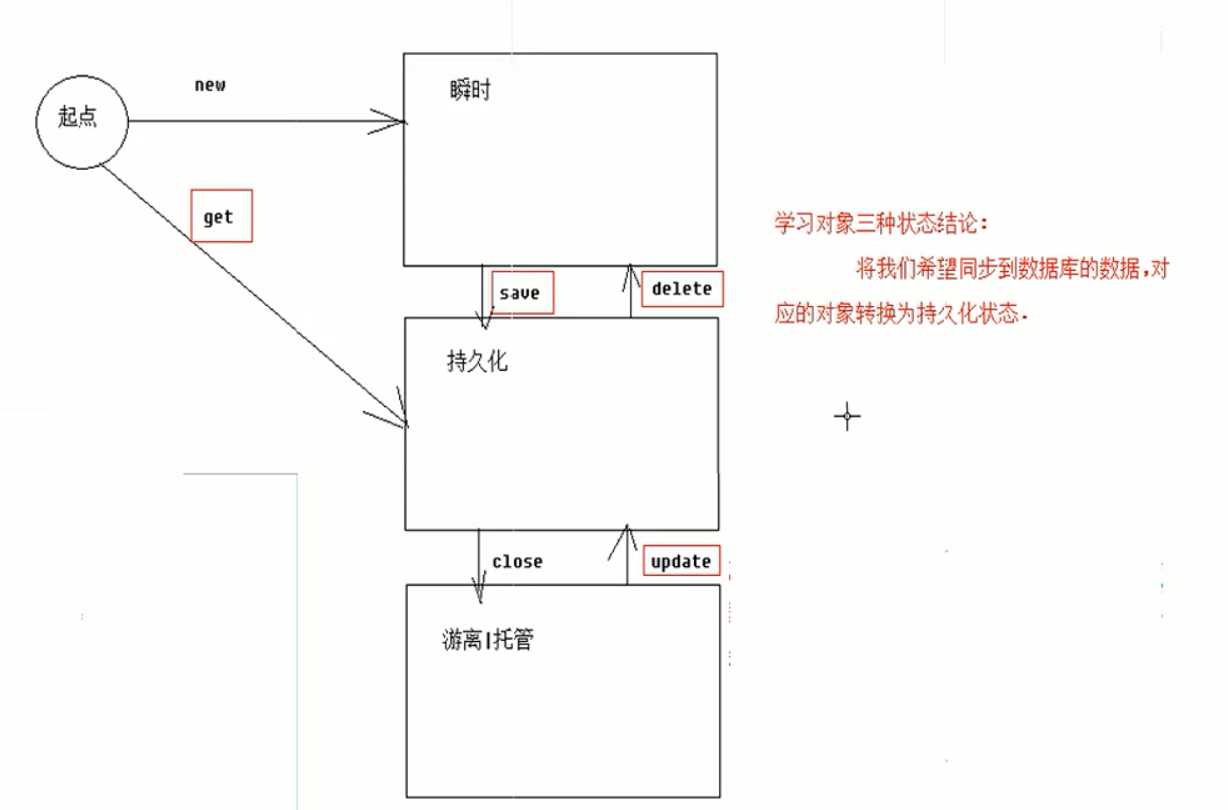创建一个实体类:

package domain; public class Customer { private Long cust_id; private String cust_name; private String cust_source; private String cust_industry; private String cust_level; private String cust_linkman; private String cust_phone; private String cust_mobile; public Long getCust_id() { return cust_id; } public void setCust_id(Long cust_id) { this.cust_id = cust_id; } public String getCust_name() { return cust_name; } public void setCust_name(String cust_name) { this.cust_name = cust_name; } public String getCust_source() { return cust_source; } public void setCust_source(String cust_source) { this.cust_source = cust_source; } public String getCust_industry() { return cust_industry; } public void setCust_industry(String cust_industry) { this.cust_industry = cust_industry; } public String getCust_level() { return cust_level; } public void setCust_level(String cust_level) { this.cust_level = cust_level; } public String getCust_linkman() { return cust_linkman; } public void setCust_linkman(String cust_linkman) { this.cust_linkman = cust_linkman; } public String getCust_phone() { return cust_phone; } public void setCust_phone(String cust_phone) { this.cust_phone = cust_phone; } public String getCust_mobile() { return cust_mobile; } public void setCust_mobile(String cust_mobile) { this.cust_mobile = cust_mobile; } @Override public String toString() { return "Customer [cust_id=" + cust_id + ", cust_name=" + cust_name + "]"; } }
ORM元数据配置文件:
<?xml version="1.0" encoding="UTF-8"?> <!DOCTYPE hibernate-mapping PUBLIC "-//Hibernate/Hibernate Mapping DTD 3.0//EN" "http://www.hibernate.org/dtd/hibernate-mapping-3.0.dtd"> <!-- 配置表与实体对象的关系 --> <hibernate-mapping> <class name="domain.Customer" table="cst_customer" > <id name="cust_id" > <!-- generator:主键生成策略 --> <generator class="native"></generator> </id> <property name="cust_name" column="cust_name" ></property> <property name="cust_source" column="cust_source" ></property> <property name="cust_industry" column="cust_industry" ></property> <property name="cust_level" column="cust_level" ></property> <property name="cust_linkman" column="cust_linkman" ></property> <property name="cust_phone" column="cust_phone" ></property> <property name="cust_mobile" column="cust_mobile" ></property> </class> </hibernate-mapping>
这里的主键生成策略是native
详细:
主键生成策略.就是每条记录录入时,主键的生成规则.(7个)
identity : 主键自增。由数据库来维护主键值。录入时不需要指定主键。
sequence: Oracle中的主键生成策略,这里使用的是mysql,暂时不介绍
increment(不使用,存在效率低和线程安全问题): 主键自增.由hibernate来维护.每次插入前会先查询表中id最大值.+1作为新主键值.
hilo(不使用,了解即可):高低位算法,主键自增。由hibernate来维护,开发时不使用。
native:hilo+sequence+identity 自动三选一策略(检测当前数据库,使用相应的策略)
uuid: 产生理论上永远不会重复的随机字符串作为主键. 主键类型必须为string 类型.
assigned:自然主键生成策略。hibernate不会管理主键值,由开发人员自己录入。
hibernate对象分为三种状态:
瞬时状态:没有id,没有session关联
持久化状态:有id,与session关联
游离状态(托管状态):有id,没有与session关联
package state; import org.hibernate.Session; import org.hibernate.SessionFactory; import org.hibernate.Transaction; import org.hibernate.cfg.Configuration; import org.junit.Test; import cn.itheima.domain.Customer; import cn.itheima.utils.HibernateUtils; //测试对象的三种状态 public class Demo { @Test //查看三种状态 public void fun1(){ //1 获得session Session session = HibernateUtils.openSession(); //2 控制事务 Transaction tx = session.beginTransaction(); //3执行操作 Customer c = new Customer(); // 没有id, 没有与session关联 => 瞬时状态 c.setCust_name("联想"); // 瞬时状态 session.save(c); // 持久化状态, 有id,有关联 //4提交事务.关闭资源 tx.commit(); session.close();// 游离|托管 状态, 有id , 没有关联 } @Test //三种状态特点 //save方法: 其实不能理解成保存.理解成将瞬时状态转换成持久状态的方法 //主键自增 : 执行save方法时,为了将对象转换为持久化状态.必须生成id值.所以需要执行insert语句生成. //如果主键生成策略是increment: 执行save方法,为了生成id.会执行查询id最大值的sql语句(select max(id) from 表). public void fun2(){ //1 获得session Session session = HibernateUtils.openSession(); //2 控制事务 Transaction tx = session.beginTransaction(); //3执行操作 Customer c = new Customer(); // 没有id, 没有与session关联 => 瞬时状态 c.setCust_name("联想"); // 瞬时状态 session.save(c); // 持久化状态, 有id,有关联 //4提交事务.关闭资源 tx.commit(); session.close();// 游离|托管 状态, 有id , 没有关联 } @Test //三种状态特点 // 持久化状态特点: 持久化状态对象的任何变化都会自动同步到数据库中. public void fun3(){ //1 获得session Session session = HibernateUtils.openSession(); //2 控制事务 Transaction tx = session.beginTransaction(); //3执行操作 Customer c = session.get(Customer.class, 1l);//持久化状态对象 c.setCust_name("微软公司"); //4提交事务.关闭资源 tx.commit(); session.close();// 游离|托管 状态, 有id , 没有关联 } }
接下来从状态角度分析hibernate的增删改查:

